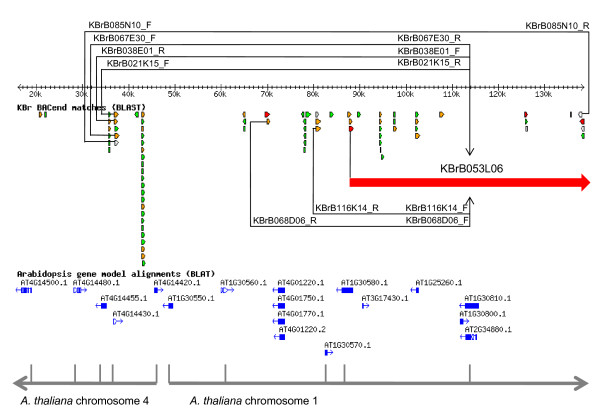Figure 2.
Validation of collinearity discontinuities. Annotation of the sequence of BAC KBrB026E16 showing aligned BAC end sequences and homologous A. thaliana gene models. Sequence similarities with A. thaliana gene models are shown with blue arrows. Sequence similarity with end sequences derived from other B. rapa BAC clones are colour-coded: red for the end sequences of fully sequenced BACs, white for the end sequences of BACs for which both can be found within the annotated BAC, orange for end sequences which may bridge to another fully sequenced BAC, and green for other cases. The two inferred collinearity blocks are indicated by grey arrows. The collinearity discontinuity (CD) is confirmed by congruous end sequence alignments of KBrB085N10, KBrB067E30, KBrB038E01 and KBrB021K15. Both end sequences of KBrB085N10 align to KBrB026E16, with the expected orientation of the reads (one in each collinearity block). For each of the remaining three, one end aligns to the A. thaliana chromosome 4-related region and the other to regions of KBrB053L06 (shown in red) that extend beyond KBrB026E16, as do one end of each of KBrB068D06 and KBrB116K14 (from which the other ends align to the chromosome 1-related region. Thus multiple BACs (for which only end sequence is available) confirm the CD identified in the sequenced clone, in addition to the fully-contained BAC (KBrB085N10).

